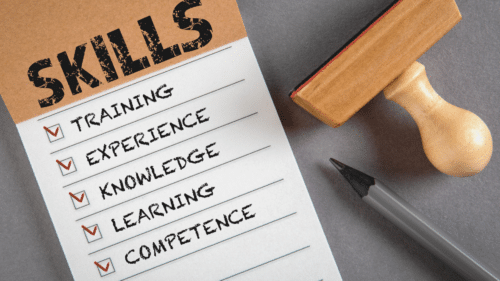The Human Factor: Why Humans Make Mistakes
How many people go to work each day, wondering how many mistakes they can make?
Our guess is none.
Essentially, people make mistakes because they operate within a complex system where our natural human limitations in terms of memory, perceptions, and communication must try to navigate unclear procedures, lack of processes, and environmental and human factors.
In other words, human error is a consequence of deeper systemic issues.
Which Factors Contribute to Human Error?
Studies have shown that people make up to 90 errors every day. Luckily, most errors are inconsequential. You have probably tried pushing a door instead of pulling it – or hit the wrong icon or app on your phone. But human error can have fatal consequences. Especially in safety-critical industries like aviation. Therefore, it is crucial to dive into the factors which contribute to human error.
Human error is often the consequence of:
- Lack of training and inadequate competency
- Faulty or overly complex procedures
- The Dirty Dozen
- Organisational and cultural issues
Read more: The Human Factor: When Humans Make Mistakes…
Let’s go through these four factors one by one:
It is a well-known fact that training prepares pilots, cabin crew, and maintenance staff to manage risks, mitigate errors, and respond safely and effectively to challenges. Outdated or insufficient training programmes leave aviation professionals unprepared when it comes to ensuring the safety of themselves, passengers, and colleagues. Therefore, it is crucial that technical training and human factors principles are continuously reinforced.
Read more: The Critical Role of Human Factors Training in Aviation
Similarly, procedures constitute an important precautionary measure when it comes to reducing human error. Procedures ensure consistency in the work, reduce ambiguity, and enhance overall safety by guiding the course of action in the daily work and during emergencies. However, procedures and practices are formulated by humans. There is an inherent risk associated with human-made procedures as they may contain biases, oversights, or ambiguities which can lead to misunderstandings or errors in their execution. There is also the risk that written procedures conflict with the conditions and way-of-work that characterise the cockpit or hangar environment. This also increases the likelihood of disregard or deviations from procedures. Especially under pressure. Humans are experts in coming up with workarounds that will do the job faster or easier – but most likely not safer.
We cannot discuss human error without touching upon human factors. The term ‘human factors’ refers to the understanding of how people’s abilities, limitations, and behaviours affect the way they perform their jobs, especially in complex and high-risk industries like aviation. When we understand how people interact with systems, environments, and each other, we can design systems, procedures, and training programmes which help enhance safety.
If you have ever been trained in human factors, you have probably heard of the Dirty Dozen. The term defines the twelve most common human factors – and contributors to human errors. These include:
- Stress
- Fatigue
- Lack of resources
- Pressure
- Lack of communication
- Lack of teamwork
- Norms
- Lack of assertiveness
- Distractions
- Lack of awareness
- Complacency
- Lack of knowledge
Read more: Diving into the Dirty Dozen
Finally, there is a lot to be learned from an organisation’s mindset and safety culture. Ineffective leadership, blame culture, and poor cross-departmental communication can compromise safety and normalise behaviours that fail to prioritise safety.
As mentioned earlier, human error is unavoidable. But how we handle errors internally makes all the different. We need an informed culture where we know what is going on. A just safety culture and strong internal cohesion will support that by creating an atmosphere where people feel safe and confident reporting mistakes, near-misses, and safety hazards, support one another, and work together as a team to improve safety without fear of punishment or blame.
When Humans Make Mistakes…
Since we can never get rid of human factors or ensure an error-free operational environment, we must instead consider how we can reduce the likelihood of errors.
If we prioritise training and competence-building.
If we continuously review and adjust our procedures to match real life.
If we identify and manage the Dirty Dozen.
And if we create organisations where people are viewed as valuable assets and not just as the proverbial rotten apple, we are better prepared to handle the situations when mistakes occur.



